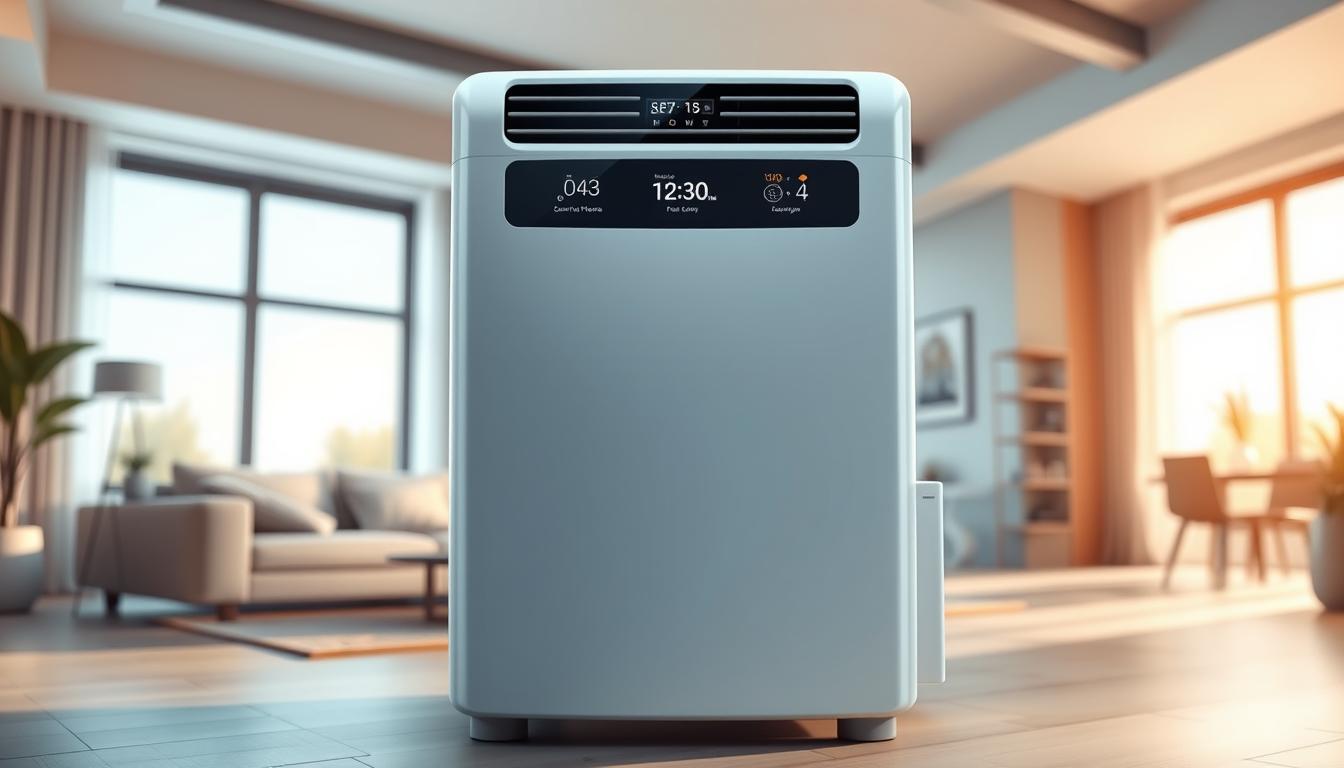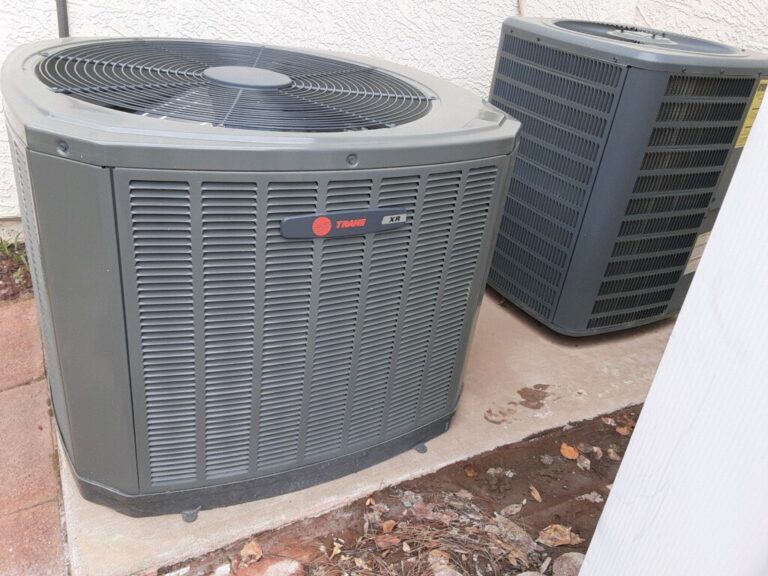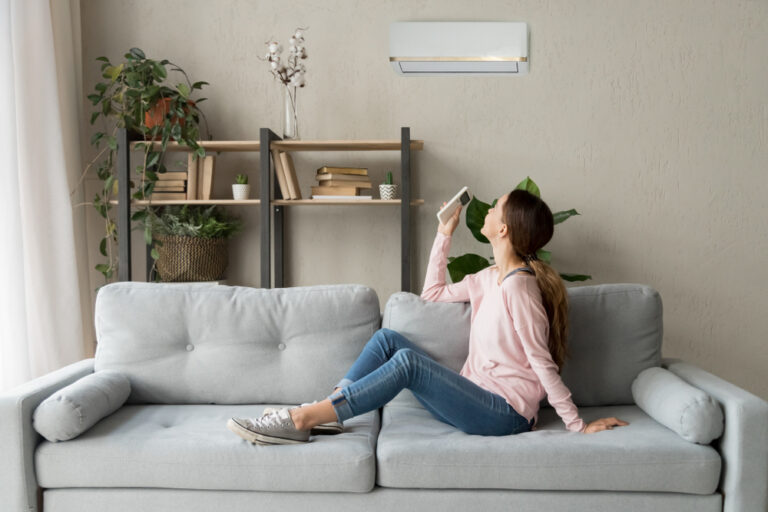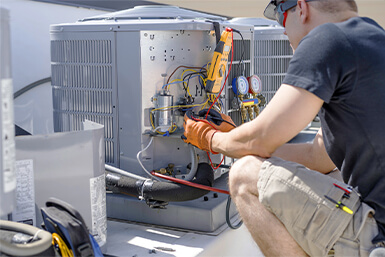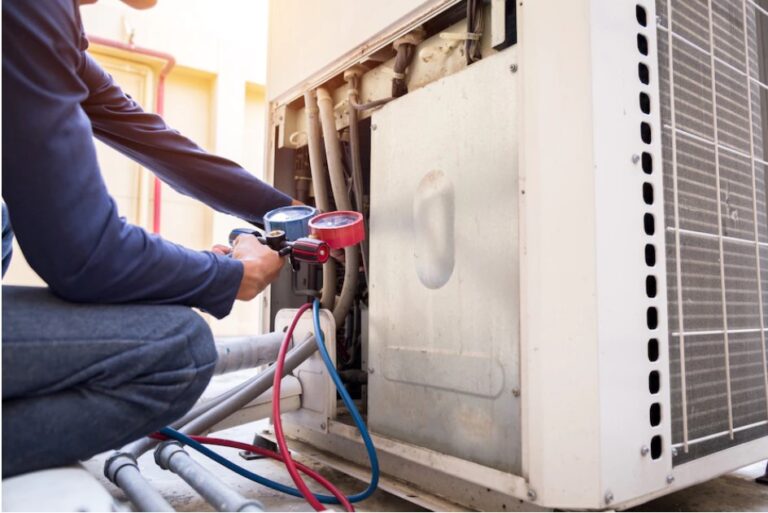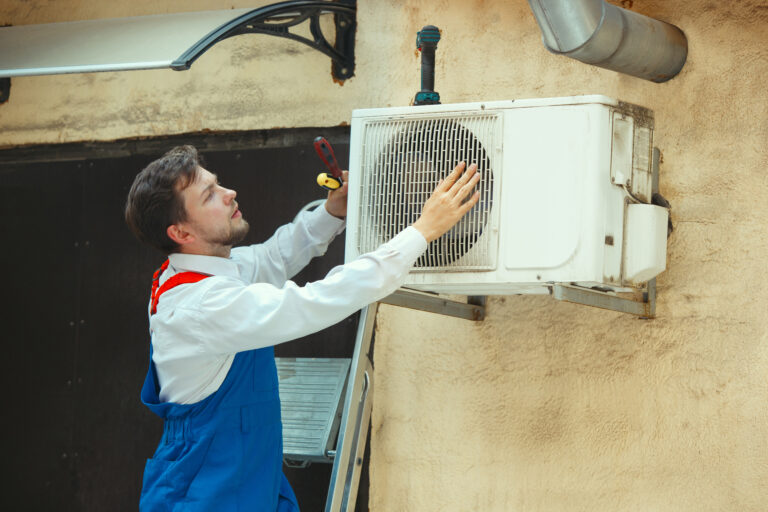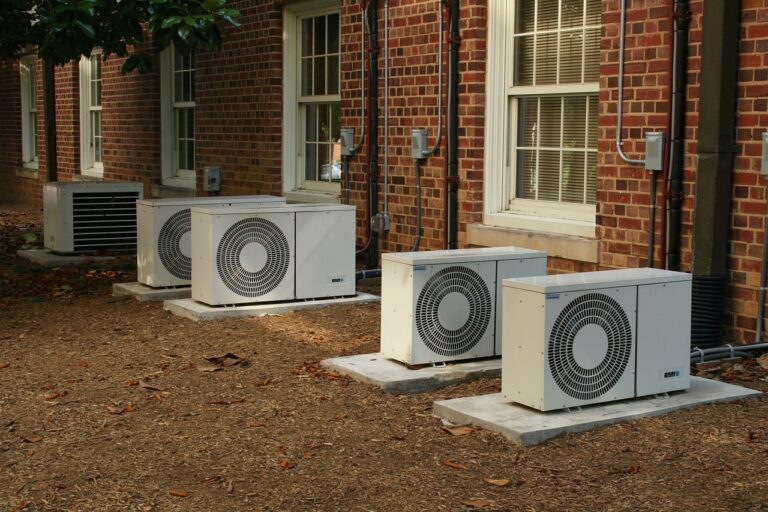Are Smart AC Units Worth It? Features, Pros & Cons
As the summer heat intensifies, the quest for a cooler, more comfortable home becomes a top priority. Traditional air conditioners have long been the go-to solution, but a new contender is gaining traction: the smart air conditioner. These innovative window air conditioners are changing the game by offering enhanced efficiency and seamless integration with existing smart home systems.
With the ability to save money on energy bills and be controlled remotely, it’s no wonder that air conditioners are becoming increasingly popular in modern homes. But are they worth the investment? This article will explore the features, benefits, and potential drawbacks of upgrading to a smart air conditioning unit, including various types such as window and portable models.
Key Takeaways
- Smart air conditioners offer improved efficiency and remote control capabilities.
- They can integrate with existing smart home systems for a streamlined experience.
- Potential energy savings can lead to lower utility bills.
- Various types of smart air conditioners are available, including window and portable models.
- Upgrading to a smart air conditioner may be worth considering for enhanced comfort and convenience.
Understanding Smart AC Technology
With the integration of Wi-Fi connectivity, air conditioners have become more than just appliances. They are now integral components of the smart home ecosystem, offering enhanced functionality and user experience.
What Makes an Air Conditioner “Smart”?
To be considered smart, an air conditioner needs to have a Wi-Fi radio, enabling it to connect to an app that allows for remote control and monitoring. This connectivity allows users to adjust the target temperature, change the fan speed, and turn the unit on and off from anywhere.
The core technology behind smart AC units includes advanced sensors, processors, and connectivity modules. These components work together to provide a seamless and efficient cooling experience.
How Smart AC Units Connect to Your Home
Smart AC units primarily connect to your home network via WiFi, although some may use other protocols like Bluetooth or Z-Wave. This connection enables integration with other smart home devices and allows for voice control through assistants like Alexa or Google Assistant.
| Connectivity Option | Description |
|---|---|
| WiFi | Primary method for connecting smart AC units to the home network and enabling remote control through mobile apps. |
| Bluetooth | Alternative connectivity option for smart AC units, often used for local control without internet connectivity. |
| Z-Wave | Protocol used for integrating smart AC units with other smart home devices, enhancing overall home automation. |
When connecting a new smart AC to your home WiFi and mobile devices, it’s essential to follow the manufacturer’s setup instructions to ensure a secure and stable connection.
Key Features of Smart AC Units
Smart AC units are revolutionizing home cooling with their advanced features and capabilities. These units are designed to provide enhanced comfort, convenience, and energy efficiency. One of the standout features of smart AC units is their ability to be controlled remotely via smartphone apps.
Remote Control via Smartphone Apps
With a smart AC unit, you can adjust the temperature, turn the unit on or off, and modify settings from anywhere using your smartphone. This is particularly useful when you’re not at home and want to ensure your house is cool when you arrive. The smartphone app allows you to control your air conditioner with ease, providing a convenient and flexible way to manage your home’s cooling.
Voice Control Integration
Many smart AC units also offer voice control integration with popular platforms like Alexa and Google Assistant. This allows you to control your air conditioner using voice commands, adding an extra layer of convenience. You can simply tell your voice assistant to adjust the temperature or turn off the AC, making it easy to control your cooling without needing to physically interact with the unit or open an app.
Scheduling and Automation Capabilities
Smart AC units often come with scheduling and automation capabilities, allowing you to create custom cooling schedules throughout the day and week. You can set your air conditioner to turn on just before you arrive home, ensuring a cool and comfortable environment. Additionally, some units offer geofencing capabilities that automatically adjust settings based on your location, so you’re not wasting energy cooling an empty room.
Energy Usage Monitoring
Another key feature of smart AC units is energy usage monitoring. These units can provide detailed reports on your energy consumption, helping you track and optimize your air conditioner usage. By understanding your energy usage patterns, you can make informed decisions to reduce your energy consumption and lower your utility bills.
In conclusion, smart AC units offer a range of innovative features that enhance comfort, convenience, and energy efficiency. From remote control via smartphone apps to voice control integration, scheduling capabilities, and energy usage monitoring, these units are designed to make cooling your home easier and more efficient than ever.
Energy Efficiency and Cost Savings
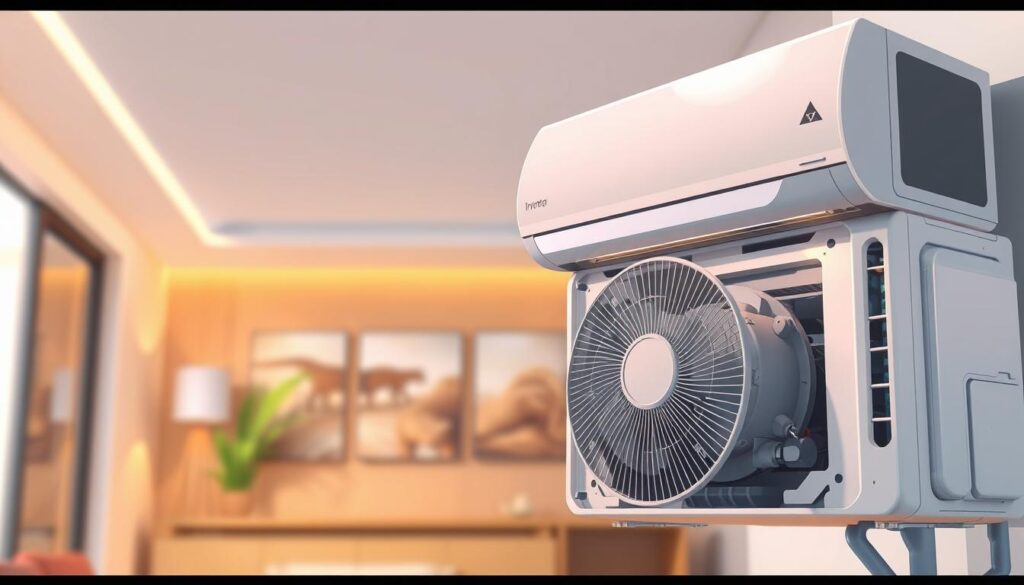
Energy efficiency is at the forefront of smart AC technology, providing users with a more sustainable cooling solution. Smart air conditioners are designed to minimize energy consumption while maintaining optimal cooling performance.
Inverter Technology Explained
One of the key technologies behind the energy efficiency of smart AC units is the inverter technology. Unlike traditional compressors that operate on an on/off basis, inverter-driven compressors adjust their speed to match the cooling demand. For instance, LG’s dual-inverter compressor continually adjusts its speed, rather than turning on and off, which can provide energy savings of up to 25% and make the device quieter than most air conditioners. This technology not only reduces energy consumption but also enhances the overall performance and longevity of the air conditioner.
Long-term Savings Potential
The long-term savings potential of smart AC units is significant. By utilizing advanced technologies like inverter-driven compressors and smart features such as scheduling and geofencing, users can achieve substantial reductions in their energy bills. According to various studies and manufacturer claims, smart AC units can lead to considerable cost savings over time. For more detailed information on how smart AC units can save energy and money, you can visit this resource. By investing in a smart air conditioner, homeowners can enjoy a cooler, more energy-efficient home while saving money in the long run.
Window vs. Portable Smart AC Units
The world of smart air conditioners is diverse, with window and portable units being two popular options that cater to different needs. When deciding between these two types of smart AC units, several factors come into play, including installation requirements, space considerations, and cooling efficiency.
Window Units: Pros and Cons
Window smart AC units are known for their discreet installation and efficient cooling. They are installed directly into a window, which can partially block the view but provides a sleek, compact solution. Efficient cooling is a significant advantage, as window units can cool a room effectively without taking up valuable floor space.
However, window units have their drawbacks. The installation process can be cumbersome, requiring careful measurement and secure fitting to prevent air leaks and ensure optimal performance. Additionally, once installed, window units are fixed in place, limiting their flexibility.
Portable Units: Pros and Cons
Portable smart AC units offer a flexible alternative to window units. They can be moved from room to room as needed, providing cooling where it’s required most. This mobility is a significant advantage, especially for those who need to cool multiple rooms or areas without installing multiple units.
However, portable units also have their downsides. They require a bulky exhaust hose to be vented out of a window, which can be aesthetically unpleasing and take up additional space. Moreover, portable units generally occupy floor space, which can be a consideration in smaller rooms.
In conclusion, the choice between window and portable smart AC units depends on individual needs and preferences. By considering factors such as installation, mobility, and cooling efficiency, consumers can make an informed decision that best suits their living situation.
How to Choose the Right Size Smart AC
Choosing the right size smart AC unit is crucial for efficient cooling and energy savings. If the unit is too small, it will struggle to cool the room, leading to increased energy consumption. On the other hand, an oversized unit will cool the room too quickly, potentially leaving you feeling clammy due to inadequate dehumidification.
BTU Ratings and Room Size Calculations
To determine the correct size smart AC for your room, you need to calculate the square footage of the space. Measure the length and width of the room, then multiply these numbers together. For example, a room that is 15 feet long and 12 feet wide has a square footage of 180 square feet. Generally, you want 20 to 25 British Thermal Units (BTUs) of cooling power for every square foot. So, for a 180 square feet room, you would need a smart AC unit with a BTU rating between 3600 and 4500.
- Room Size: Calculate the square footage by multiplying the room’s length and width.
- BTU Rating: Aim for 20-25 BTUs per square foot.
Additional Factors Affecting Size Selection
While room size is a primary factor, other elements can influence the size of the smart AC unit you need. These include:
- Ceiling Height: Higher ceilings require more cooling power.
- Window Exposure: Rooms with more sunlight may need a larger unit.
- Room Occupancy: More occupants generate more heat.
- Heat-Generating Appliances: Presence of appliances like ovens or computers can increase cooling needs.
Considering these factors will help you choose a smart AC unit that is appropriately sized for your specific needs, ensuring efficient cooling and energy savings.
Top Window Smart AC Units Worth Considering
Smart window air conditioners are revolutionizing home cooling with their advanced features and sleek designs. These units not only provide efficient cooling but also integrate seamlessly with smart home systems, offering users a high level of control and convenience.
GE Profile Clearview PHNT10 Smart Air Conditioner
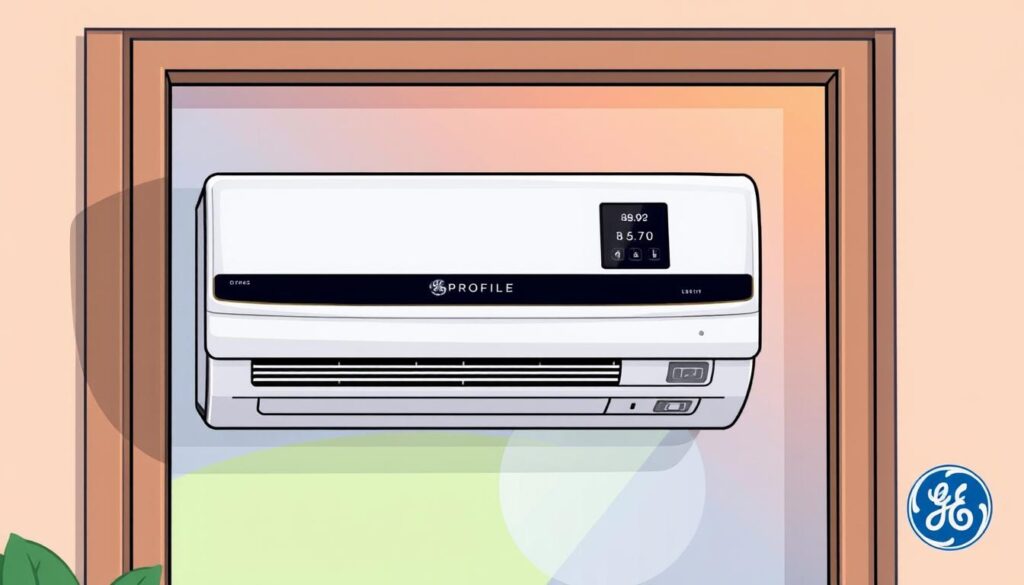
Overview
The GE Profile Clearview PHNT10 is our top pick for its innovative design that preserves the view from your window. It’s a smart air conditioner that combines quiet cooling performance with Wi-Fi connectivity, allowing for remote control through smartphone apps.
Pros
This model boasts a unique design that doesn’t obstruct the window view, making it ideal for rooms where maintaining visibility is important. It’s also quiet and offers smart home integration.
Cons
Some users may find the installation process a bit challenging due to its unique design. Additionally, it’s priced at a premium compared to some other models on the market.
Features
The GE Profile Clearview PHNT10 features Wi-Fi connectivity for smart home integration, a sleek design that preserves window views, and quiet operation. It’s also energy-efficient, making it a cost-effective option in the long run.
Midea 8,000BTU U-Shaped Air Conditioner
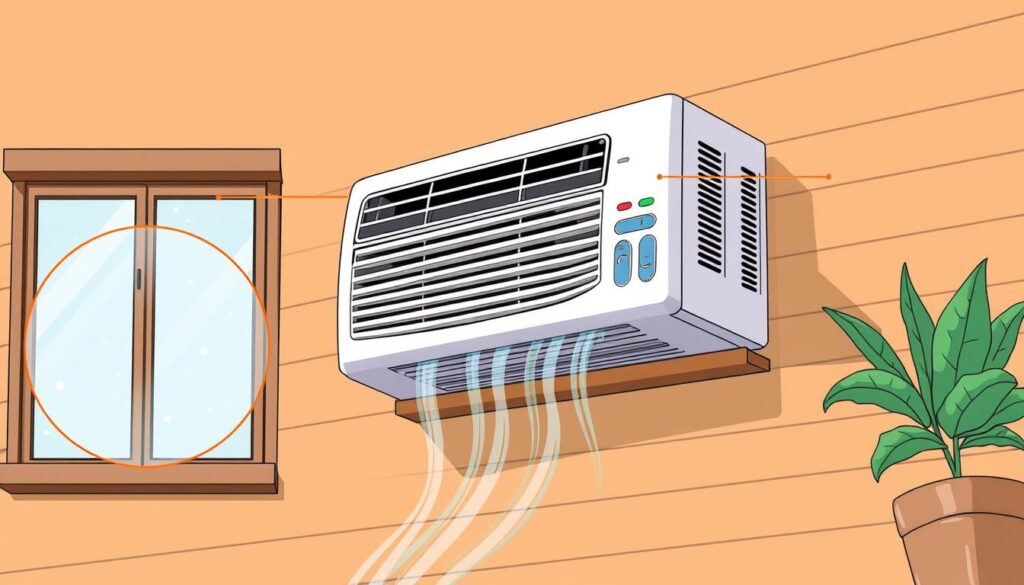
Overview
The Midea 8,000BTU U-Shaped Air Conditioner is an innovative window AC unit that allows you to open and close your window even when the AC is installed. It’s equipped with Wi-Fi and supports voice commands through Alexa and Google Assistant.
Pros
This model’s U-shaped design is its standout feature, enabling window operation while the AC is in use. It’s also ultra-quiet and supports smart home integration.
Cons
The U-shaped design, while innovative, may not appeal to everyone due to its distinct look. Some users have also reported issues with the unit’s durability.
Features
The Midea U-Shaped Air Conditioner features an innovative design for window operation, Wi-Fi connectivity for smart control, and support for voice commands. It’s designed for efficient cooling and quiet operation.
Windmill AC
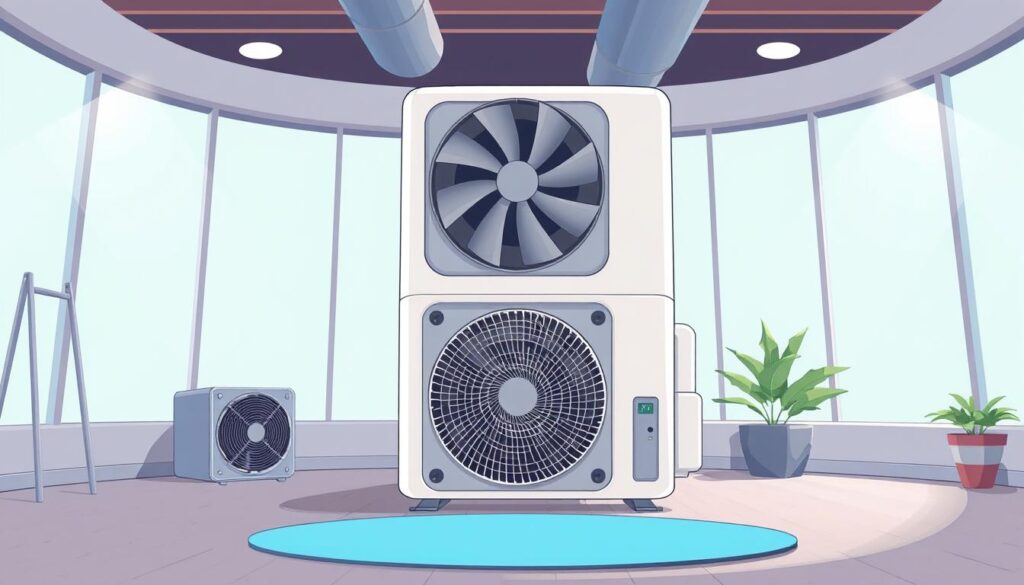
Overview
The Windmill AC is a smart window air conditioner known for its stylish design and user-friendly features. It’s easy to install and provides effective cooling for medium-sized rooms.
Pros
This model is praised for its stylish, modern design and ease of installation. It’s also quiet and does a fine job of cooling.
Cons
Some users have reported that the app functionality could be improved. Additionally, it’s not the cheapest option available in the market.
Features
The Windmill AC features a modern design, easy installation, and smart home integration. It’s designed to be quiet and efficient, making it a great option for those looking for a hassle-free cooling solution.
Hisense 10000-BTU Window AC Inverter WiFi
Generate an image of the Hisense 10000-BTU Window AC Inverter WiFi, highlighting its inverter technology.
Overview
The Hisense 10000-BTU Window AC Inverter WiFi is a powerful and efficient cooling solution that uses inverter technology to cool medium-sized rooms effectively and quietly.
Pros
This model is appreciated for its inverter technology, which provides efficient cooling and quiet operation. It also supports voice control through smart home systems.
Cons
Some users have noted that the installation can be a bit tricky. The unit is also relatively heavy, which might make installation more challenging for some users.
Features
The Hisense 10000-BTU model features inverter technology for efficient and quiet cooling, Wi-Fi connectivity for smart control, and support for voice commands. It’s designed to provide effective cooling while being energy-efficient.
Best Portable Smart AC Units
The best portable smart AC units offer a perfect blend of convenience, efficiency, and innovative features. These units are designed to provide effective cooling solutions for various room sizes and can be controlled remotely through smartphone apps or voice assistants.
Dreo Portable Smart Air Conditioner AC516S
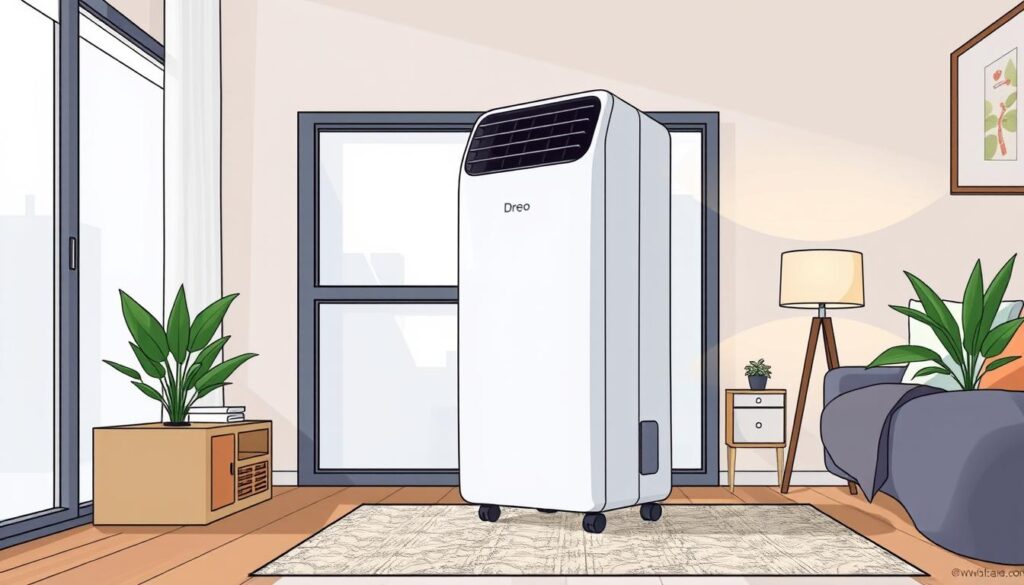
Overview
The Dreo AC516S is a smart air conditioner that offers the convenience of app and voice control. It’s easy to move from room to room and doesn’t require drainage, making it a versatile cooling solution.
Pros
This unit is known for its ease of use and mobility. It can cool rooms up to 450 square feet efficiently and is designed with a no-drain feature, enhancing its convenience.
Cons
Some users might find the unit’s noise level slightly higher than expected, although it’s still within acceptable ranges for most environments.
Features
The Dreo AC516S boasts advanced features such as smart connectivity, allowing users to control it via their smartphones or through voice commands. Its portable air design makes it easy to relocate as needed.
Midea Duo Smart Inverter Portable Air Conditioner
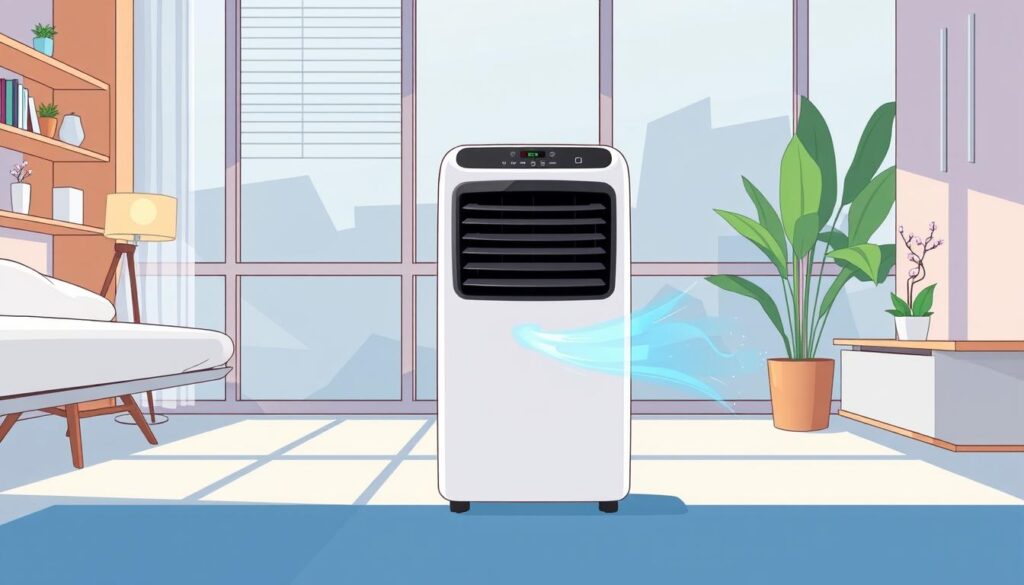
Overview
The Midea Duo is a smart portable air conditioner that you can control with your phone or voice. It’s designed to quietly cool off a 450-square-foot room in no time, thanks to its inverter technology.
Pros
Its dual-hose design improves cooling efficiency compared to single-hose portable units. The Midea Duo is also known for its quiet operation and smart features.
Cons
Some users may find the dual-hose setup slightly more complicated to install compared to single-hose models.
Features
This model features advanced inverter technology for efficient cooling and is compatible with smart home systems for seamless integration.
EcoFlow Wave 2
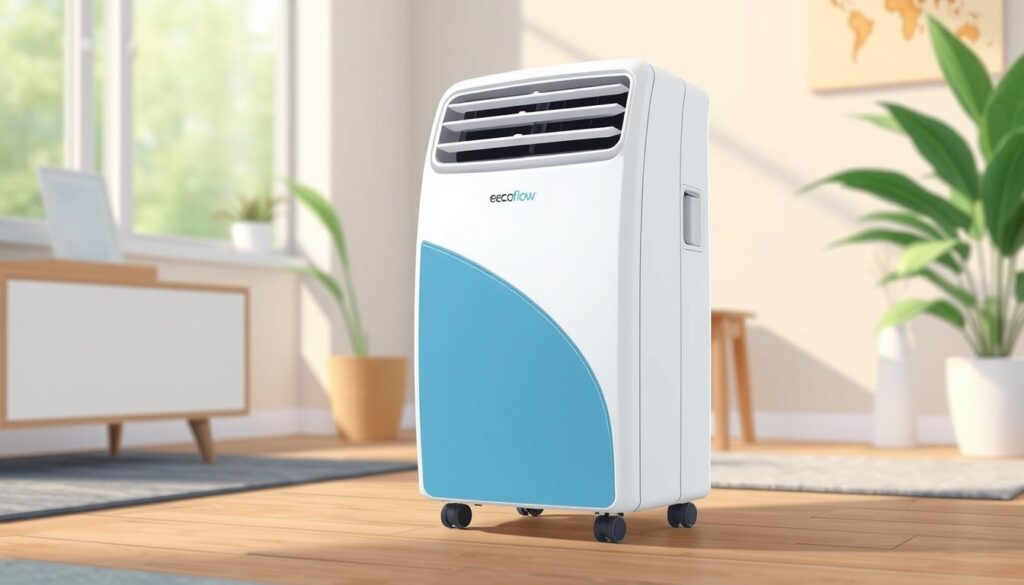
Overview
The EcoFlow Wave 2 is not just a great portable air conditioner, but it also doubles as a space heater during the cooler months, making it a versatile unit for year-round use.
Pros
Its dual functionality as both an air conditioner and heater makes it an excellent choice for those looking for a multi-purpose device.
Cons
The EcoFlow Wave 2 might be pricier than some other portable AC units on the market due to its advanced features and dual functionality.
Features
This model is designed with innovative technology that allows it to switch between cooling and heating modes, providing a comprehensive climate control solution.
When choosing the best portable smart AC unit for your needs, consider factors such as room size, desired features, and compatibility with your smart home system. For more information on selecting the ideal AC model for your home, visit https://acrepairnearme.services/which-ac-model-is-ideal-for-your-home/.
Smart AC Units with Advanced Cooling Technology
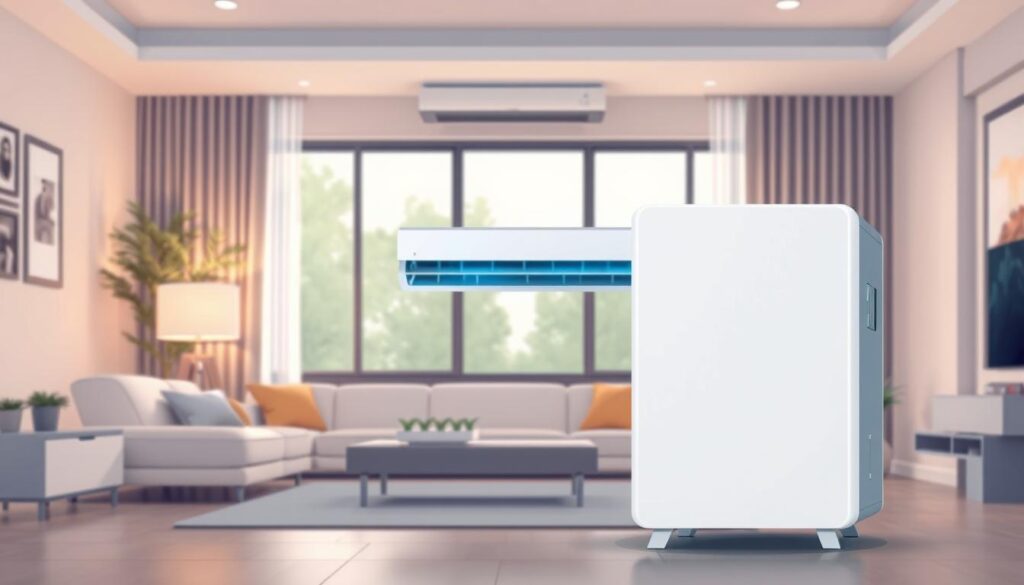
The latest smart AC units are equipped with advanced cooling technologies that significantly enhance their performance and efficiency. These technologies not only improve the cooling performance but also contribute to energy savings and a more comfortable living environment.
Inverter Compressor Technology
Inverter compressor technology is a significant advancement in smart AC units. Unlike traditional compressors that operate at a fixed speed, inverter compressors adjust their speed according to the cooling demand. This results in more efficient cooling and reduced energy consumption. For instance, the Hisense window air conditioner uses inverter compressor, making it one of the most efficient and quietest window air conditioners available. The inverter technology allows for precise temperature control and significant energy savings.
| Feature | Inverter Compressor | Traditional Compressor |
|---|---|---|
| Energy Efficiency | High | Moderate |
| Noise Level | Low | Moderate to High |
| Temperature Control | Precise | Less Precise |
Innovative Airflow Designs
Innovative airflow designs are another key feature of advanced smart AC units. Designs such as U-shaped and N-shaped models improve cooling efficiency by allowing for more effective airflow. For example, the Midea U-shaped air conditioner is designed to provide directional airflow, enhancing cooling comfort and efficiency. These designs help in distributing cooled air more evenly throughout the room, reducing hot spots and improving overall comfort.
To learn more about using your air conditioner efficiently, visit how to use your air conditioner.
By incorporating these advanced technologies, smart AC units are becoming increasingly efficient and user-friendly.
Smart Home Integration Capabilities
One of the most significant advantages of smart AC units is their ability to integrate with a wide range of smart home devices and systems, enhancing overall convenience and energy efficiency.
Amazon Alexa and Google Assistant Compatibility
Smart AC units can be controlled using voice commands through Amazon Alexa and Google Assistant. This compatibility allows users to adjust the temperature, turn the AC on or off, and change modes without needing to physically interact with the unit or open an app. For example, you can say, “Alexa, set the living room AC to 72 degrees,” or “OK Google, turn on the bedroom air conditioner.”
Apple HomeKit and Matter Support
Many smart AC units are compatible with Apple HomeKit, allowing users to control their air conditioners through the Home app on their Apple devices. The emerging Matter standard is also being adopted by many manufacturers, including TCL, which has incorporated Matter into their units, making them compatible with multiple smart home systems such as Alexa, Google Assistant, HomeKit, and SmartThings. This compatibility ensures a seamless smart home experience across different platforms.
IFTTT and Smart Home Routines
Smart AC units can also be integrated with IFTTT (If This Then That) to create custom automations. For instance, you can set your AC to turn on when you arrive home or adjust the temperature based on the weather outside. This level of automation enhances energy efficiency and convenience.
| Smart Home Feature | Benefit |
|---|---|
| Voice Control via Alexa/Google Assistant | Hands-free operation for convenience |
| Apple HomeKit Compatibility | Seamless integration with Apple devices |
| Matter Support | Multi-platform compatibility for smart home devices |
| IFTTT Integration | Custom automations for enhanced energy efficiency |
Installation Considerations for Smart AC Units
The installation of smart AC units is a crucial step in ensuring they operate efficiently and effectively. Proper installation not only affects the unit’s performance but also its longevity and energy consumption.
Window Installation Tips
Installing a window-mounted smart AC unit requires careful planning. First, ensure you have the correct size unit for your window. Measure the window width and check the unit’s specifications. Most window smart AC units come with installation kits that include side panels and brackets to secure the unit in place.
Key considerations include: ensuring the unit is level, sealing any gaps around the unit to prevent air leakage, and securing the unit firmly to prevent it from falling or shifting.
As noted in our review of the GE Clearview, some units can be trickier to install than others, requiring multiple attempts to get the installation right. However, with patience and the right tools, the installation can be successfully completed.
Portable Unit Setup Guide
Portable smart AC units offer more flexibility in terms of installation. To set up a portable unit, place it in the desired room, ensuring it’s near a window for the exhaust hose. The exhaust hose must be properly connected to the unit and vented out the window to ensure efficient cooling and to prevent the unit from pulling hot air back in.
Proper exhaust hose placement is crucial for the efficient operation of portable smart AC units. Ensure the hose is as straight as possible and not kinked, as this can reduce the unit’s performance.
By following these guidelines, you can ensure a successful installation of your smart AC unit, whether it’s a window-mounted or portable model. This will help in achieving optimal cooling performance and energy efficiency.
Converting Traditional AC Units to Smart Ones
Smart AC controllers offer a cost-effective way to add smart functionality to your existing air conditioner. This innovative solution allows you to control your traditional AC unit remotely using a smartphone app, making it a great alternative to buying a new smart AC unit.
Smart AC Controllers Explained
Smart AC controllers are devices that connect to your existing air conditioner and enable remote control through a smartphone app. They work by sending infrared signals to the AC unit, mimicking the commands from the original remote control. This technology makes it possible to turn your “dumb” air conditioner into a smart device, allowing for scheduling, automation, and energy monitoring.
How Smart AC Controllers Work
These controllers typically connect to your home Wi-Fi network and use the internet to communicate with the app on your smartphone. When you send a command through the app, it is transmitted to the controller, which then sends the appropriate infrared signal to your air conditioner.
Sensibo Sky
The Sensibo Sky is a smart AC controller that can make your traditional air conditioner smart. It uses infrared signals to control your AC unit and can be managed through the Sensibo app.
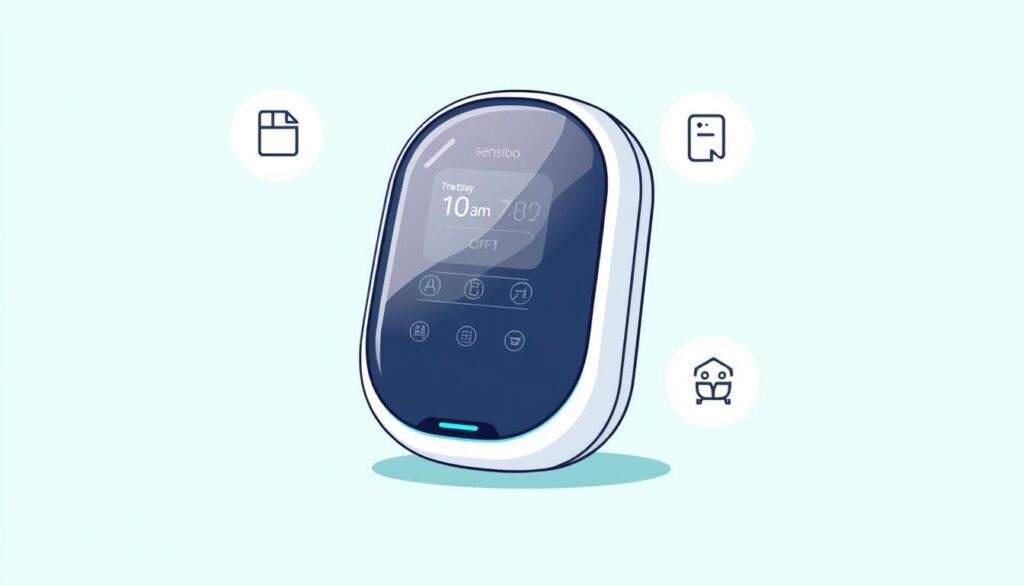
Cielo Breez Plus
The Cielo Breez Plus is another smart AC controller that offers advanced features like voice control and scheduling. It’s compatible with a wide range of air conditioners and can be controlled using the Cielo app.
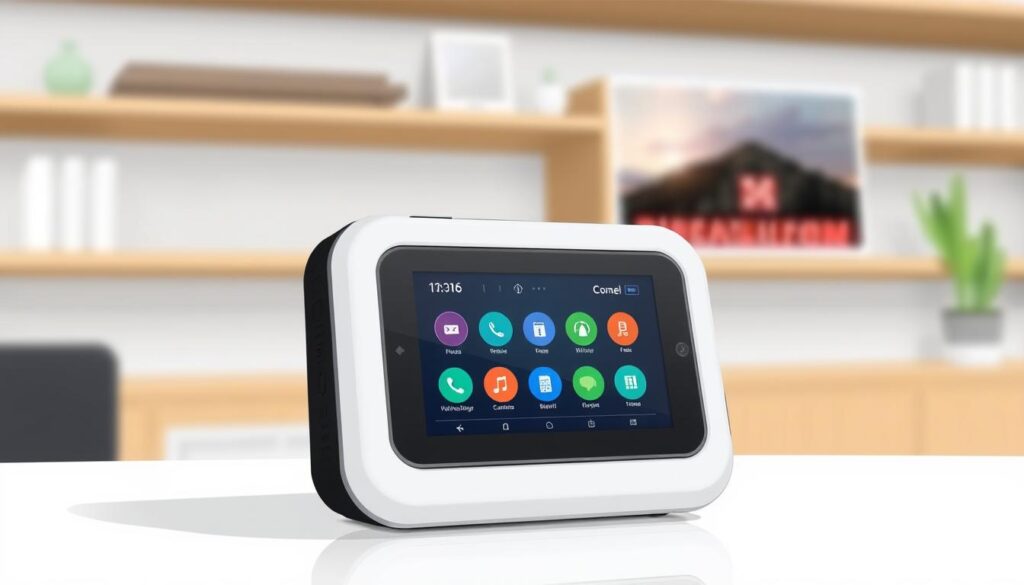
Sensibo Air
The Sensibo Air is a smart AC controller that stands out with its advanced presence detection feature. It can automatically turn your AC on or off based on whether you’re at home or not, optimizing energy consumption.
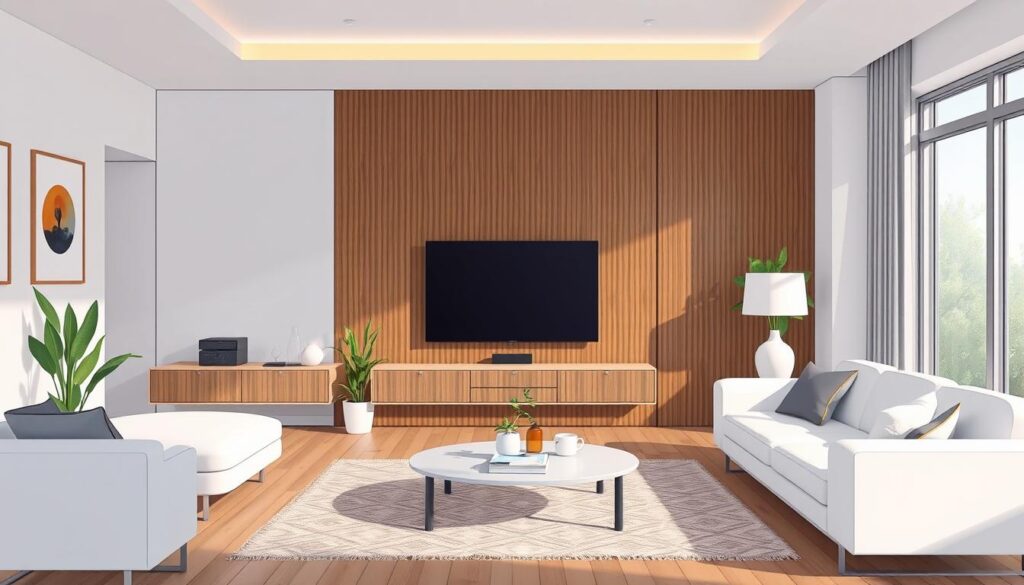
When choosing a smart AC controller, it’s essential to consider compatibility with your existing air conditioner, the features you need, and the ease of installation. By adding a smart controller, you can enjoy the benefits of a smart AC unit without the need for a full replacement.
Common Smart AC Unit Issues and Troubleshooting
Troubleshooting your smart AC unit can be straightforward if you know what to look for and how to address common issues. Smart AC units, like any other technology, can sometimes experience problems, but understanding how to resolve these issues can enhance your overall experience with the device.
Connectivity Problems
One of the most common issues with smart AC units is connectivity problems, particularly with WiFi. If your unit is not connecting to your network, try restarting your router and the AC unit. Ensure that your WiFi network is stable and that the AC unit is within range. If issues persist, check for firmware updates or reset the unit to its factory settings.
App Functionality Issues
App functionality issues can also arise, including crashes, login problems, or feature limitations. To troubleshoot, ensure that your app is up-to-date and that your device meets the minimum system requirements. If you’re experiencing synchronization problems between the app and your AC unit, try restarting both the app and the unit.
Performance Troubleshooting
If your smart AC conditioner is not cooling effectively, check that it is properly sized for your room and that the window installation is correct. Ensure that filters are clean and that there are no obstructions to airflow. If problems continue, consider resetting the unit or checking for firmware updates.
| Issue | Troubleshooting Step | Potential Solution |
|---|---|---|
| WiFi Connectivity | Restart router and AC unit | Stable connection |
| App Crashes | Update app, check system requirements | Functional app |
| Poor Cooling Performance | Check filter cleanliness, ensure proper installation | Effective cooling |
Noise Levels: How Smart AC Units Compare
When it comes to selecting a smart air conditioner, noise level is a crucial factor to consider for a comfortable living space. The operational noise of a smart AC unit can significantly affect your home’s ambiance and overall comfort.
Decibel Ratings Explained
Decibel ratings are a crucial measure of how loud or quiet a smart air conditioner operates. Understanding decibel levels helps you compare different models and choose one that suits your needs. For context, a whisper is around 20 dB, while a normal conversation is about 60 dB.
- A low decibel rating indicates a quieter operation.
- Typical smart AC units range from 40 dB to 60 dB.
- Inverter technology often contributes to lower decibel levels.
Quietest Smart AC Options
Some smart AC units stand out for their exceptionally quiet operation. The Midea U MAW08V1QWT is noted for being one of the quietest, with noise levels that are barely perceptible.
Other quiet models include:
- Hisense 10000-BTU Window AC Inverter WiFi: Known for its quiet and efficient operation.
- Midea Duo Smart Inverter Portable Air Conditioner: Offers quiet performance along with portability.
When shopping for a quiet smart AC, look for models with inverter technology and low decibel ratings. These features can significantly enhance your comfort by reducing operational noise.
Smart AC Units: Environmental Impact
Understanding the eco-friendliness of smart AC units is essential for making an informed decision. As consumers become more environmentally conscious, the ecological impact of these devices has become a significant consideration.
Smart AC units can offer several environmental benefits, primarily through their energy efficiency and smart features that optimize energy consumption.
Energy Star Certification
One way to gauge the energy efficiency of a smart AC unit is by looking for the Energy Star certification. This certification, awarded by the U.S. Environmental Protection Agency, indicates that the product meets specific energy efficiency standards. When shopping for a smart AC, look for the Energy Star label, as it signifies that the unit uses less energy than standard models, potentially reducing your carbon footprint and saving on utility bills.
Eco-Friendly Refrigerants
Another critical aspect of a smart AC unit’s environmental impact is the type of refrigerant it uses. Traditional refrigerants have been known to contribute to ozone depletion and climate change. Modern smart AC units often utilize eco-friendly refrigerants with lower global warming potential (GWP). For instance, some units use R-32 refrigerant, which has a significantly lower GWP compared to older refrigerants like R-410A.
By choosing a smart AC unit with Energy Star certification and eco-friendly refrigerants, consumers can reduce their environmental impact while enjoying the benefits of advanced cooling technology.
Price Comparison: Smart vs. Traditional AC Units
Smart air conditioners are becoming more popular, but how do their prices compare to those of traditional air conditioners? The price difference between smart AC units and their traditional counterparts is a crucial factor for many consumers.
Initial Investment Analysis
The initial cost of smart air conditioners is generally higher than that of traditional models. For example, a smart Frigidaire 8,000 BTU AC costs around $329 on Amazon, while a nonsmart 10,000 BTU Frigidaire model costs about $30 less. However, the price difference is narrowing as smart technology becomes more mainstream.
A comparison of upfront costs across different BTU ratings shows that smart AC units are priced slightly higher, but the premium is decreasing. The table below illustrates the price comparison between smart and traditional air conditioners across various BTU ratings.
| BTU Rating | Smart AC Price | Traditional AC Price | Price Difference |
|---|---|---|---|
| 8,000 BTU | $329 | $299 | $30 |
| 10,000 BTU | $399 | $369 | $30 |
| 12,000 BTU | $499 | $449 | $50 |
Long-Term Value Proposition
While the initial investment in a smart air conditioner may be higher, the long-term value proposition is more compelling. Smart AC units offer features like energy efficiency, scheduling, and remote control, which can lead to significant cost savings over time.
For instance, energy efficiency savings can offset the higher initial cost of smart units. Additionally, features like scheduling and remote control contribute to cost savings by optimizing usage patterns. The integration with existing smart home systems also adds value to the overall smart home ecosystem.
Is a Smart AC Unit Right for You?
As we’ve explored throughout this article, smart AC units offer numerous benefits, but are they the right choice for your home? To make an informed decision, consider your specificcooling needsand how a smart airconditionercan address them. If you value the convenience of controlling your AC unit remotely via a smartphone app or enjoy the energy-saving potential of smart scheduling, a smart AC might be an excellent investment.
For those with existingsmart homeinfrastructure, integrating a smart AC unit can enhance your home’s automation capabilities. However, if you’re on a tight budget or don’t have a complex cooling setup, a traditional airconditionermight still be the more cost-effective option.
When evaluating your needs, consider factors such asroomsize,windowtype, and desired features like voice control orenergyusage monitoring. By weighing these factors and considering your technical comfort level, you can make an informed decision about whether a smart AC unit is right for you.
Ultimately, a smart AC unit can offer significantenergysavings and enhanced convenience, making it a worthwhile investment for many homeowners.

